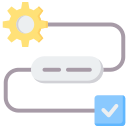Security, Compliance, and Governance Without Friction
Grant only the access each bot or integration needs. Rotate credentials, use secrets vaults, and separate duties. This discipline reduces blast radius while keeping automated workflows both auditable and highly reliable.
Security, Compliance, and Governance Without Friction
Log every transaction, decision, and data touch. Clear records simplify compliance reviews and root-cause analysis. When people can see what happened and why, trust in automation rises across teams and leadership levels.



